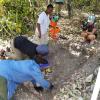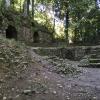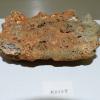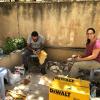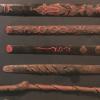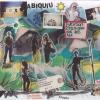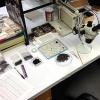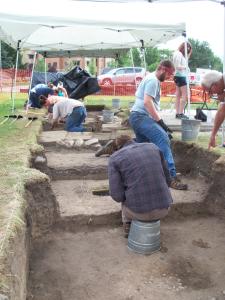Estate Little Princess Field School
The 2019 field season built upon discoveries from 2017 and 2018, continuing shovel probe excavation in the vicinity of the former enslaved persons’ village to the west of the Great House. Once again, the most recent field effort was guided by historical maps digitized from documents on file at the Danish National Archives, historical photos, the known location of extant building remains in the location of the former slave village.






